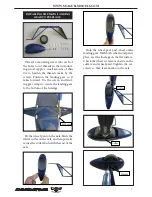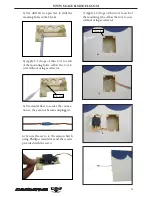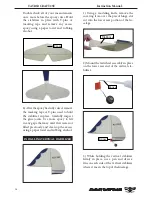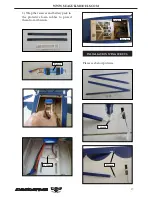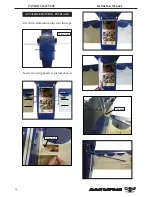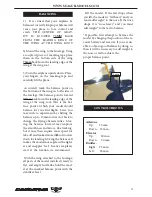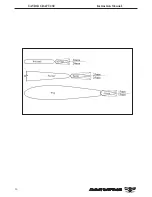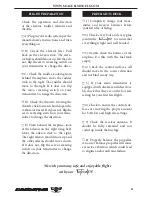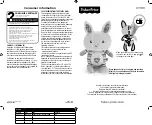
WWW.SEAGULLMODELS.COM
21
21
We wish you many safe and enjoyable flights
with your
.
FLIGHT PREPARATION.
PREFLIGHT CHECK.
Check the operation and direction
of the elevator, rudder, ailerons and
throttle.
A) Plug in your radio system per the
manufacturer’s instructions and turn
everything on.
B) Check the elevator first. Pull
back on the elevator stick. The eleva-
tor halves should move up. If it they do
not, flip the servo reversing switch on
your transmitter to change the direc-
C) Check the rudder. Looking from
behind the airplane, move the rudder
stick to the right. The rudder should
move to the right. If it does not, flip
the servo reversing switch on your
transmitter to change the direction.
D) Check the throttle. Moving the
throttle stick forward should open the
carburetor barrel. If it does not, flip the
servo reversing switch on your trans-
mitter to change the direction.
E) From behind the airplane, look
at the aileron on the right wing half.
Move the aileron stick to the right.
The right aileron should move up and
the other aileron should move down.
If it does not, flip the servo reversing
switch on your transmitter to change
the direction.
1) Completely charge your trans-
mitter and receiver batteries before
your first day of flying.
2) Check every bolt and every glue
joint in the
to ensure that
everything is tight and well bonded.
3) Double check the balance of the
airplane. Do this with the fuel tank
empty.
4) Check the control surfaces. All
should move in the correct direction
and not bind in any way.
5) If your radio transmitter is
equipped with dual rate switches dou-
ble check that they are on the low rate
setting for your first few flights.
6) Check to ensure the control sur-
faces are moving the proper amount
for both low and high rate settings.
7) Check the receiver antenna. It
should be fully extended and not
coiled up inside the fuselage.
8) Properly balance the propeller.
An out of balance propeller will cause
excessive vibration which could lead
to engine and/or airframe failure.

